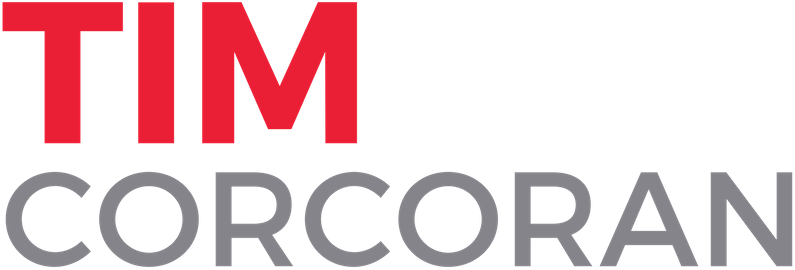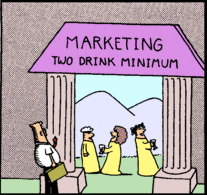Linking Business Development to Partner Compensation
/In recent years, as client fee pressure has increased and client loyalty has decreased, law firms are investing significant time and money in business development programs. Some partners receive training to dust off selling skills that were largely unnecessary during a time of plenty. Other partners receive training, then individualized coaching, then more training, then more coaching, in an often-futile attempt to turn everyone into a capable rainmaker. Mathematically, if every equity and income partner generates just a little bit more, this is far more impactful than demanding even more production from our handful of true rainmakers. Trouble is, this rarely works out as planned. There are logistical, financial and psychological barriers to this plan of turning every partner into a rainmaker, and it's time law firm leaders recognized its ineffectiveness, and instead adopt a more productive approach. It's time to touch the third rail of law firm management: partner compensation. Conventional wisdom suggests that law firm partners are motivated by financial incentives, and therefore many compensation plans are designed to encourage behavior that generates financial success. Conventional wisdom is often wrong. Many compensation plans overemphasize origination and in so doing fail to recognize the critical contributions of many partners. Furthermore, the plans often fail spectacularly in addressing and rewarding origination. But this is a problem that can be solved.
Different Strokes
The first mistake with most law firm compensation plans is the expectation that partners are, or can become, what baseball enthusiasts call "five-tool players." As noted business development coach Mike O'Horo says, "While there are certainly some superstars who are equally adept at a variety of things, the reality is that most players are exceptional at just a few skills." Compensation plans often fall into this trap by expecting numerous exceptional behaviors such as new matter origination, high leverage, high utilization of billable hours, inbound and outbound cross-selling, mentoring of young lawyers, firm or practice group management, pro bono activities, matter profitability, high billing and collection realization, expense management, marketing and business development activities, and more. In reality, successful teams are composed of players with different and complementary skill sets and a good compensation plan should recognize and reward different contributions. In a well-designed plan, partners are able to maximize compensation by maximizing their particular and unique skill sets.
To be clear, generating new business is challenging in any industry. There's a certain tenacity required to doggedly pursue new opportunities, to network and meet new prospective clients, to understand their business challenges, to devise custom solutions to these challenges, and to overcome objections and negotiate prices to win the business. Done well, it involves significant rejection, and significant time—time that quite obviously cannot be billed or recaptured. So, origination should be a key driver of compensation.
But too many plans stop there. First of all, the partner who excels at networking may lack the deep subject-matter expertise necessary to craft a custom legal solution. He or she may lack the financial acumen necessary to devise a creative fee arrangement that both meets the client's budget and generates profits for the firm. And so begins the arduous negotiating process of determining the relative contribution of other partners who helped advance an opportunity to a close. Treating this as a solo effort fails to acknowledge the contributions of others, and relying on the largesse of partners to divvy up their spoils fairly, or even consistently, is a recipe for unrest. This is why most other businesses provide some sort of team compensation when multiple parties are routinely involved in closing a sale. In fact, many companies willingly "double pay" commissions, or, in law firm parlance, award greater than 100 percent origination credit, when it's demonstrated that doing so nets more wins and higher revenue. Companies, and law firms, that do this poorly incentivize the hoarding of opportunities: "I would likely win more engagements if I collaborated with others, but it's not in my economic self-interest to do so, so I'll act alone."
And let's not overdo origination credit. Too many plans treat origination of a single matter as a perpetual annuity, crowding out any incentive to cross-sell, or for older partners to transition key client relationships to up-and-coming younger partners. Other plans allow partners to stake a claim on all future business from clients they initially generate, whether or not that partner is ever again involved in winning another engagement.
Most businesses recognize that "hunters" are best deployed at hunting, whereas "farming" involves cultivating relationships to yield more results over time. Generating new business from existing clients is far more likely to involve other lawyers, particularly those billing time to a matter. There is a clear link between the quality of the work product and client retention, but the definition of quality has evolved to include the manner in which the legal services are delivered, not merely the outcome, and certainly not merely the cost. A partner could put forth significant effort to win a matter, and then poor communication, poor budgeting and poor project management can impair the client's satisfaction, even when the matter's outcome is favorable. Accordingly, retention is a common factor in corporate compensation plans but is glaringly missing from most law firm partner compensation plans. The short-term thinking that leads law firm leaders to view business in one-year increments, tidying up financials at year-end and distributing profits to shareholders, creates the illusion that financial performance can be effectively measured one matter at a time rather than by measuring a myriad of variables over an extended period.
Retention is a powerful financial driver. Incorporating a retention incentive moves client satisfaction from a subjective aspiration to a concrete goal. A focus on retention solidifies client relationships and insulates the firm from the potential financial devastation caused by lateral departures. Retention incentives recognize multiple contributors, from those who generate the work, to those who deliver the work, to those who manage the relationship. Retention is also a significant factor in measuring profitability. In a typical law firm compensation scheme, a matter that earns premium fees and generates significant hours may produce significant revenue and therefore significant compensation to the originating partners and/or billing timekeepers even as it generates minimal profits. However, a matter that is priced strategically, thereby lowering the cost of sales, that maximizes leverage by pushing the work down to the lowest-cost resource capable of delivering quality work product, that generates high client satisfaction and therefore repeat work across numerous practice areas, and that results in significantly higher profits, might generate minimal financial rewards for the partners involved. Profit cannot be fully measured in the short term, and retention is a key factor in measuring profitability over the long term.
Change Management
A successful compensation plan meets three primary requirements:
It furthers the firm's strategic objectives
It's easy to understand and therefore helps manage partner expectations
It's easy to administer
It's a rare law firm compensation plan that meets these requirements.
In many cases, law firms have no strategic objectives beyond growth, or perhaps profitable growth. There is no stated retention target, or cross-selling target, or a bottom-up financial forecast reflecting the realistic growth trajectory of each practice and sub-practice and the timekeepers associated with each. Vaguely aspiring to "grow the business" year-in and year-out isn't a strategy so much as an aspiration. When law firms delineate specific objectives, the actions required to achieve the objectives become more obvious. And just as importantly, the actions inconsistent with achieving the objectives become more obvious.
A compensation plan that is readily understood and clearly defines which actions will generate what income is much more effective and less distracting than a vague plan that places a premium on origination or billing credit, and then incorporates a mystical subjective analysis to address all other behaviors and outcomes. Despite the many shortcomings of today's plans, there are two primary reasons partners resist change: it may be a terrible plan, but they've grown comfortable with it and change begets uncertainty; and everyone fears that a new formula will lead to decreased compensation.
It is true that new formulas will lead to changed compensation for some. But that partner whose compensation varies significantly from year to year is likely to embrace more certainty, even if the new target is lower than an earlier high point. The partner who dreads networking on the cocktail circuit but does it out of a sense of obligation might serve everyone's needs better if she participated in—and helps win—far more pitches at her colleagues' invitation than trying to drum up a new matter or two on her own. And the rainmakers today will remain the rainmakers tomorrow, and are more adept than most at adjusting their selling parameters to incorporate new compensation measures. And, yes, there may be a partner here or there who's found a way to game the system—hoarding origination credit, minimizing leverage, keeping key clients close to the vest, periodically threatening to leave—who will refuse to change, and for good reason. Under a more effective plan, these behaviors will be recognized for the profit-dilutive actions they are, and a partner adhering to such models will need to accept that doing so comes at a price.
Designing the new compensation scheme is only half the battle. As great a challenge as it is to define a firm's strategic objectives and design incentives that drive and reward behavior consistent with these objectives, it's just as challenging to migrate from where we are today. This is why compensation plan changes need to take place over time, in phases. An abrupt shift, even to a plan that everyone agrees has the potential to be more effective, can be just as disruptive and distracting as a poorly designed plan. Rolling out a new plan has as much to do with strategic planning and financial analysis as it does with organizational psychology. Success comes from staging changes in increments, accompanied by detailed financial analysis and a comprehensive communication plan.
Law firm partners want to be rewarded for their efforts, they want certainty in a time of great unrest. Law firm leaders want profitable growth. Clients want quality legal services at market rates delivered in innovative new ways. We can't afford to wait until all of this takes place and then design new compensation plans. By designing the compensation plans first, we can design the future we want and need.
Timothy B. Corcoran is the 2014 President of the Legal Marketing Association and an elected Fellow of the College of Law Practice Management. He delivers keynote presentations, conducts workshops, and advises leaders of law firms, in-house legal departments, and legal service providers on how to profit in a time of great change. To inquire about his services, contact him at +1.609.557.7311 or at tim@corcoranconsultinggroup.com.
A version of this article first appeared in The Legal Intelligencer, an ALM publication, and is reprinted with permission.






